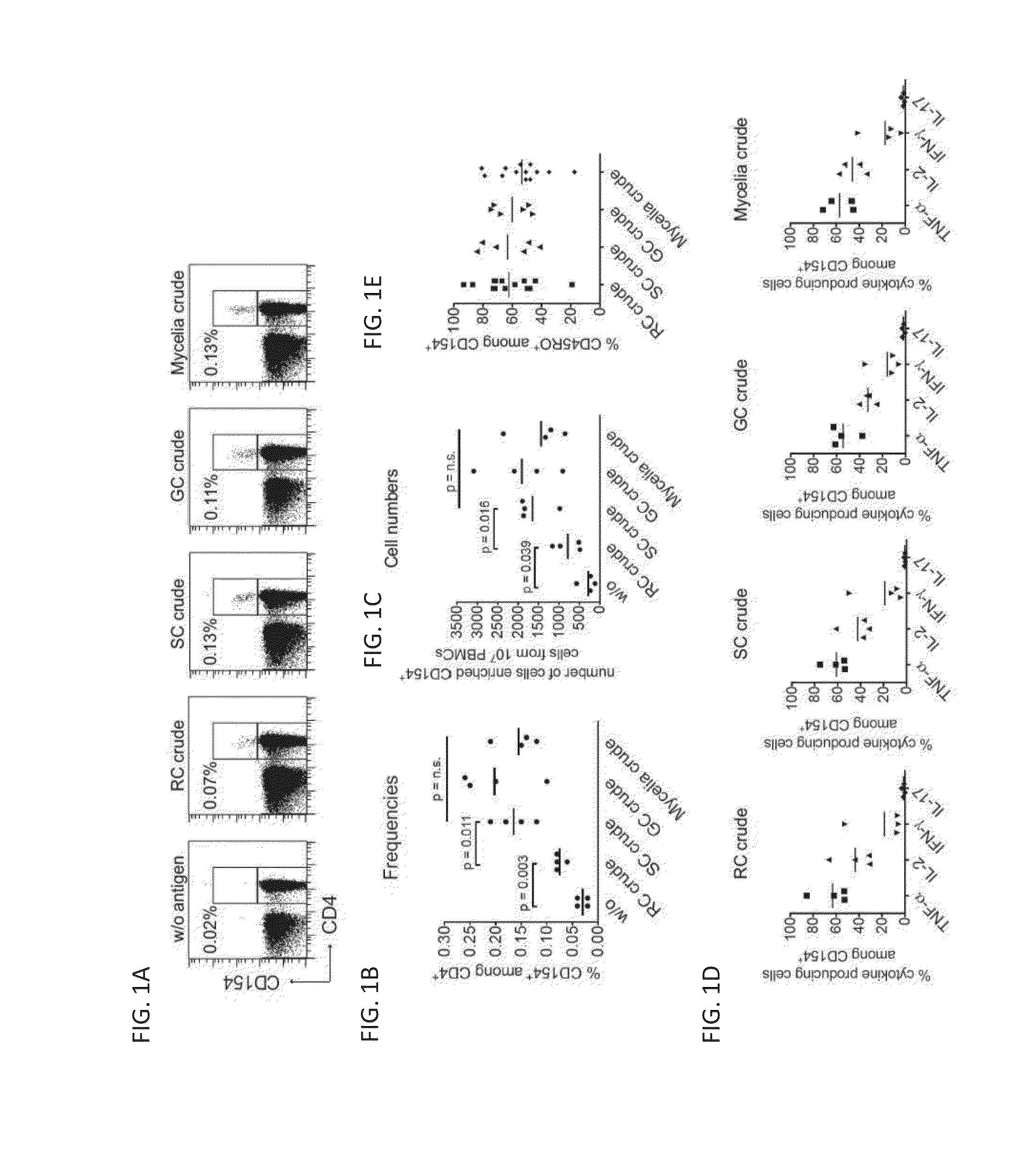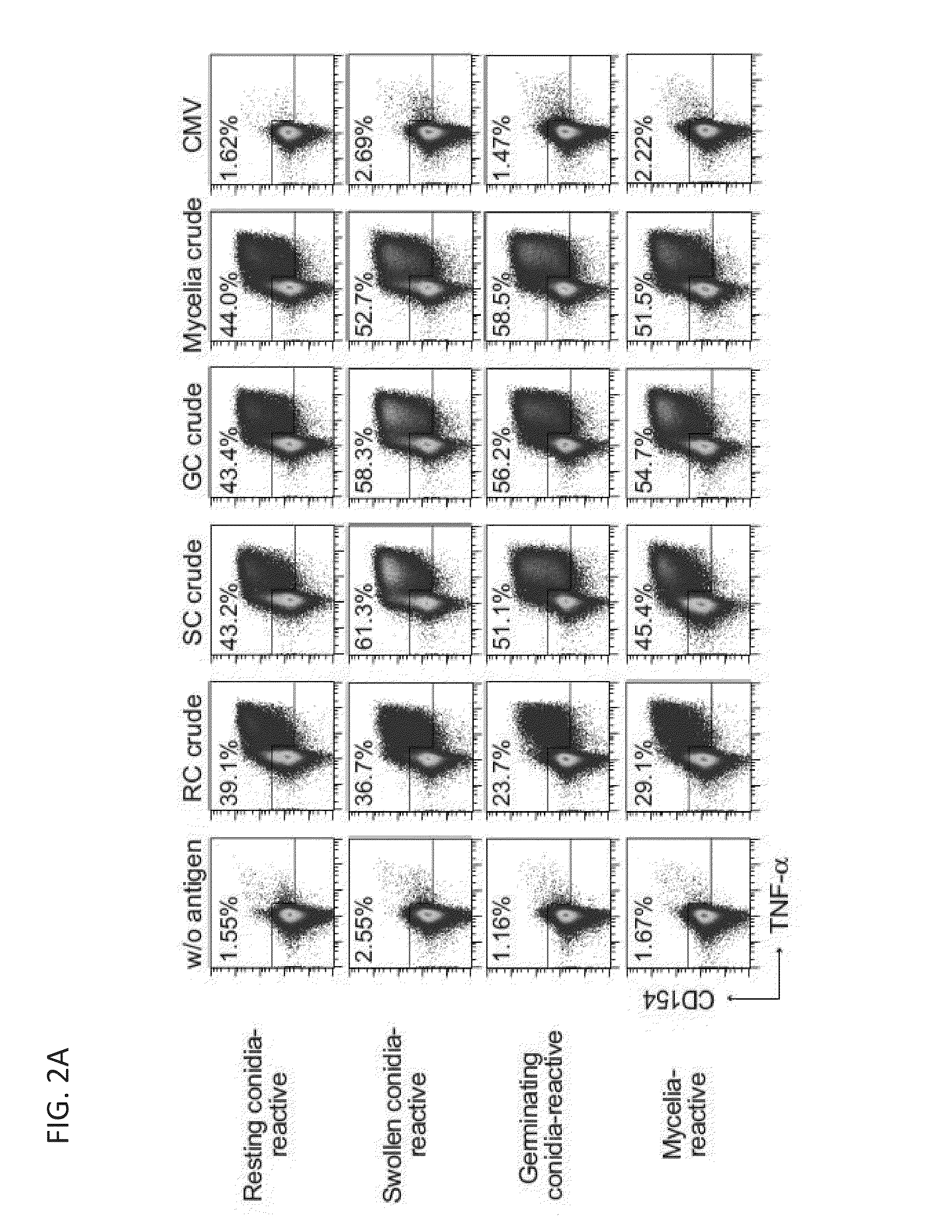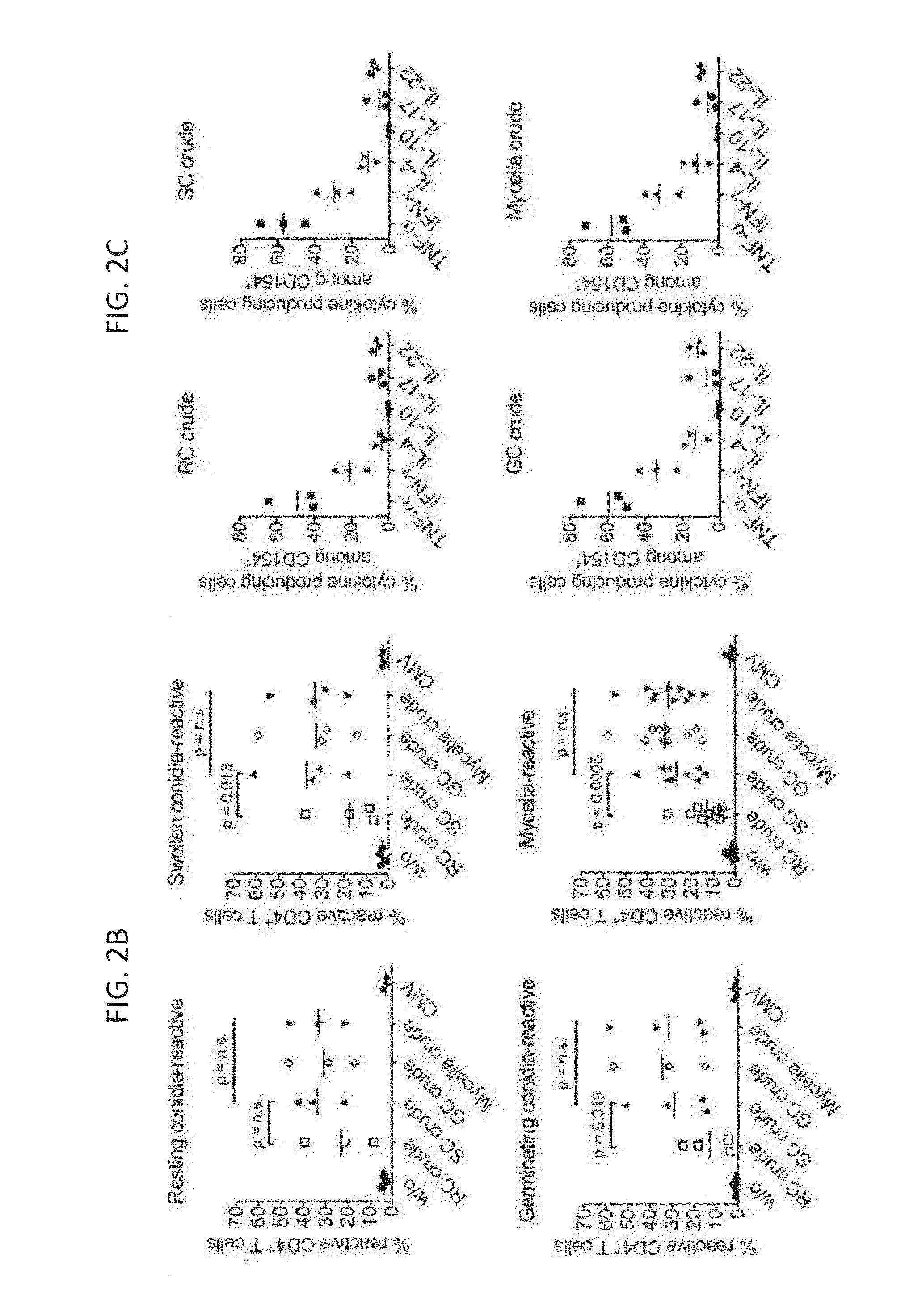Immunogenic antigens from aspergillus fumigatus
an antigen and antigen technology, applied in the field of invivotarget antigens of aspergillus fumigatus, can solve the problems of morbidity and mortality that are still unacceptabl
- Summary
- Abstract
- Description
- Claims
- Application Information
AI Technical Summary
Benefits of technology
Problems solved by technology
Method used
Image
Examples
embodiments
[0090]In one embodiment of the invention a human sample, e.g. blood or tissue from a patient suffering from IA or at risk for an A. fumigatus infection is obtained. Patients at risk for fungal infections are immunocompromised patients, e.g. following chemotherapy, hematopoetic stem cell transplantation, HIV patients, or patients with intrinsic genetic defects leading to immune deficiency. One or more in-vivo-target antigens of Aspergillus fumigatus, wherein said at least one in-vivo-target antigen reveals an immune reactivity characterized by[0091]i) the in vivo existence of antigen-specific T cells comprising more than 60% memory T cells, and[0092]ii) said antigen-specific T cells further comprise T cells able to produce IFN-gamma upon stimulation at a frequency between 15% and 80% and / or IL17 upon stimulation at a frequency between 5% and 30%, and wherein said at least one in-vivo-target antigen may be selected from the group consisting of antigens Scw4, Pst1, Shm2, GliT and TpiA ...
example 1
Materials and Methods
[0109]Blood Donors
[0110]Buffy coats from healthy donors were obtained from the Institute for Transfusion Medicine, University Hospital Dortmund after informed consent. Peripheral blood mononuclear cells (PBMCs) were isolated by Ficoll-Paque (GE Healthcare Life Sciences, Freiburg, Germany) density gradient centrifugation.
Preparation of A. fumigatus Lysates
[0111]For the generation of all A. fumigatus (ATCC46645) protein extracts, except for the lysate of resting conidia (RC), 2×10E8 conidia were inoculated in 200 ml YPD medium and cultured at 37° C. and 200 rpm. Swollen conidia (SC) were harvested after 6 h, germinated conidia (GC) after 8 h, and mycelium after 20 h of cultivation. Cells were recovered by centrifugation (RC, SC, GC) or filtration (mycelium) and washed with water before storage at −80° C. Total RC, SC, or GC lysates were generated by disruption of frozen cells in saline[0.9% (w / v) NaCl] using a Micro-Dismembrator (Sartorius). For total mycelial lys...
example 2
Human CD4+ T cell response against lysates of different A. fumigatus morphotypes
[0119]CD4+ T cells specifically reacting against A. fumigatus can be identified using CD154 expression as a specific read-out for antigen activated CD4+ T cells after short in vitro stimulation with fungal lysate (Bacher et al, J Immunol 2013; Frentsch et al, Nat Med 2005) To analyze against which A. fumigatus morphotype the human T cell response is directed, peripheral blood mononuclear cells (PBMC) from healthy donors were stimulated for 7 hours with crude lysates from resting, swollen and germinating conidia or mycelia, containing the total soluble fraction of the mechanically disrupted fungal cells. Reactive CD154-expressing CD4+ T cells were identified by flow-cytometry. Although all lysates induced a small population of CD154 expressing CD4+ T cells, the frequency of reactive cells stimulated with resting conidia lysate was significantly lower, compared to stimulation with lysates from other morpho...
PUM
| Property | Measurement | Unit |
|---|---|---|
| Fraction | aaaaa | aaaaa |
| Fraction | aaaaa | aaaaa |
| Fraction | aaaaa | aaaaa |
Abstract
Description
Claims
Application Information
 Login to View More
Login to View More - R&D Engineer
- R&D Manager
- IP Professional
- Industry Leading Data Capabilities
- Powerful AI technology
- Patent DNA Extraction
Browse by: Latest US Patents, China's latest patents, Technical Efficacy Thesaurus, Application Domain, Technology Topic, Popular Technical Reports.
© 2024 PatSnap. All rights reserved.Legal|Privacy policy|Modern Slavery Act Transparency Statement|Sitemap|About US| Contact US: help@patsnap.com










